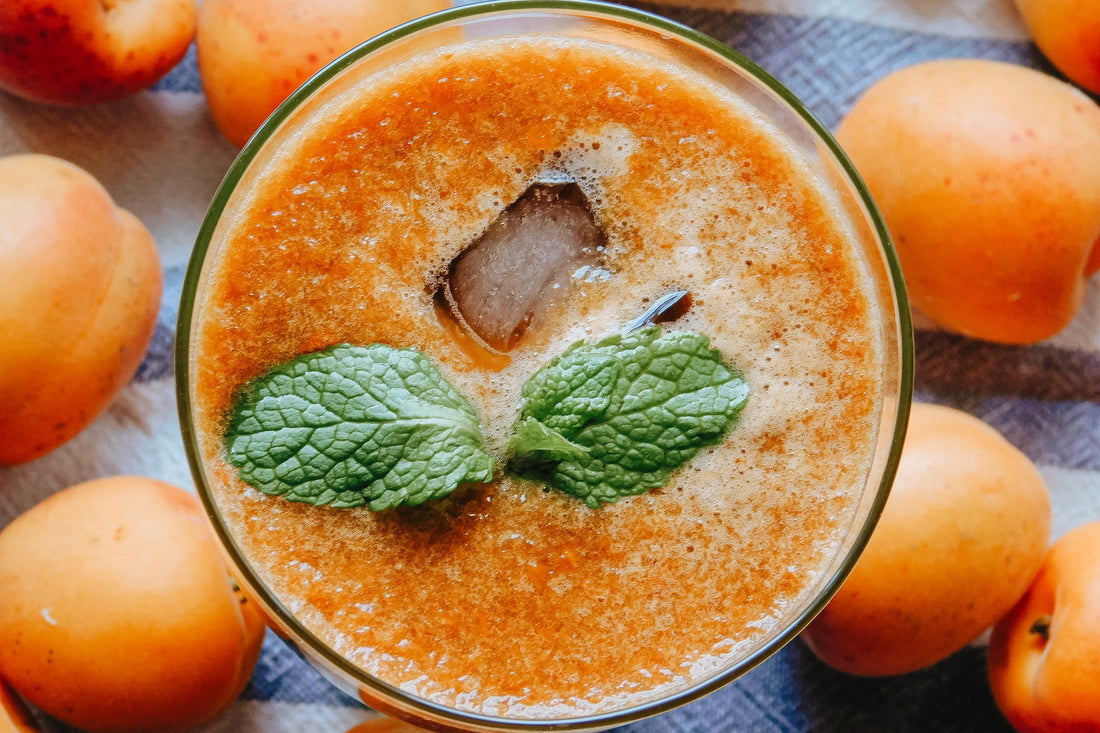
Friendly Bacteria: How to Make Your Own Kombucha
Share
For the past few weeks, we’ve been talking about the benefits of bacteria for our bodies, our immune system, and even for the environment. While the benefits of friendly bacteria are clear, especially when it comes to homemade fermented foods, there is still a lot of confusion around so-called “bad” or “unhealthy” bacteria. Kombucha is a great example.
Bacteria are not inherently good or bad, as they all serve an important role in the greater ecosystem of our bodies and the world. Kombucha strikes that balance. Not only is it very healthy for you and your immune system, but it’s also been shown to have antimicrobial benefits against unhealthy bacteria like Candida yeast and the bacteria that cause infections.
“These antimicrobial effects suppress the growth of undesirable bacteria and yeasts, but they do not affect the beneficial, probiotic bacteria and yeasts involved in kombucha fermentation,” reports the doctors at Healthline.
Beyond its ability to balance the “good” and “bad” bacteria in your body, kombucha is a tasty, fizzy drink that also provides probiotics, bioactive compounds that enhance your immune system and your metabolism, and antioxidants.
To get started with making your own kombucha, you need a symbiotic culture of bacteria and yeast (SCOBY). These are readily available from other kombucha brewers, and you can also buy them online, at farmers’ markets, and at many mainstream health food stores. Let’s get brewing!
Ingredients:
- 8 cups of filtered water
- 4-6 tea bags (black, green, or a combination)
- 1 cup of granulated sugar
- 1 kombucha SCOBY (symbiotic culture of bacteria and yeast)
- 1/2 cup of starter tea (previously fermented kombucha)
Equipment:
- 1-gallon glass jar or container
- Breathable cloth or coffee filter
- Rubber band
- Wooden or plastic spoon
- Funnel
- Glass bottles with airtight lids for bottling
Instructions:
- Boil 4 cups of water in a large pot. Once boiling, remove from heat and add the tea bags. Let steep for about 10 minutes.
- Remove the tea bags and add the sugar, stirring until it dissolves. Then, add the remaining 4 cups of filtered water to cool down the tea mixture.
- Pour the sweetened tea into a clean 1-gallon glass jar or container.
- Add the SCOBY and the starter tea to the jar. Gently place the SCOBY on top, with the smoother side facing up.
- Cover the jar with a breathable cloth or coffee filter and secure it with a rubber band. This allows airflow while preventing contaminants from entering.
- Place the jar in a warm, well-ventilated area away from direct sunlight. Ideally, the temperature should be between 68-85°F (20-29°C). Let the kombucha ferment for 7-14 days, depending on your taste preference. The longer it ferments, the more tangy it will become.
- After the fermentation period, carefully remove the SCOBY and about 1/2 cup of the finished kombucha to use as starter tea for the next batch. Set them aside in a clean glass container.
- If desired, you can flavor the kombucha during a second fermentation. Transfer the remaining kombucha to glass bottles using a funnel. Add fruit, herbs, or spices of your choice, leaving about an inch of headspace in each bottle.
- Seal the bottles tightly and let them sit at room temperature for 1-3 days to allow carbonation to build. This second fermentation can be adjusted based on your preferred level of carbonation.
- Once the second fermentation is complete, refrigerate the bottles to slow down the fermentation process and chill the kombucha.
- When serving, you can strain the kombucha to remove any sediment or strands of the SCOBY. Pour into a glass and enjoy!
Remember to keep the SCOBY and starter tea for future batches. With each new batch, the SCOBY will grow a new layer, which you can separate and share with others or use for continuous brewing.
Enjoy your homemade kombucha!
